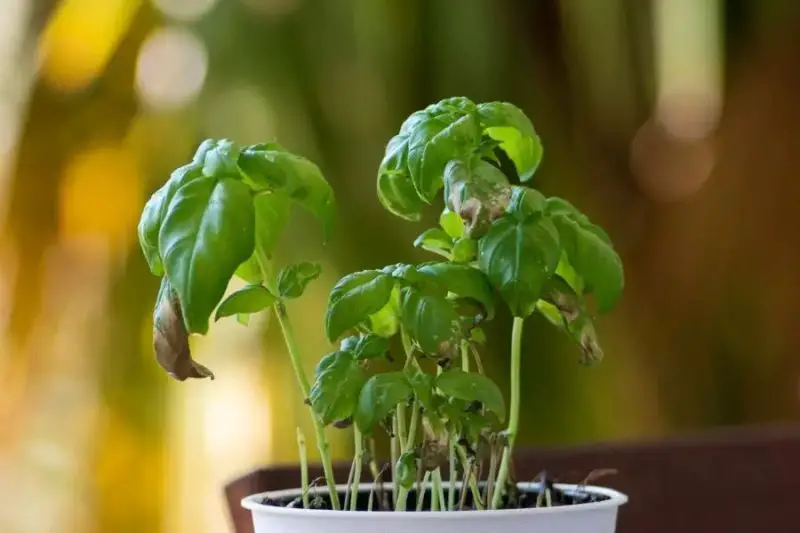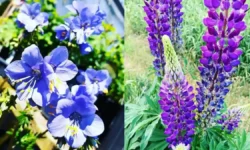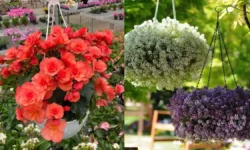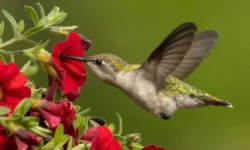Basil is one of the most popular herbs grown both indoors and outdoors due to its aromatic leaves and versatility in cooking. However, one common problem many gardeners face is wilting basil plants. When your basil plant starts to wilt, it can be worrying because it often signals stress or underlying issues that threaten the plant’s health. Understanding the reasons behind wilting and how to fix them is essential to keep your basil thriving and producing lush, fragrant leaves.
Wilting occurs when the plant’s tissues lose turgidity — the water pressure that keeps cells firm and upright. Various factors can cause basil to lose water faster than it can absorb, or damage the roots and stems, resulting in drooping leaves and stems. By diagnosing these causes early, you can take corrective measures to restore your basil’s vigor and prevent permanent damage.
Table of Contents
Understanding Wilting in Basil Plants

Wilting is a visible symptom rather than a disease itself. It indicates that the basil plant is under stress, typically due to an imbalance between water uptake and loss. This imbalance can arise from environmental factors, cultural mistakes, pests, diseases, or physical damage.
In healthy plants, roots absorb water from the soil, transporting it through the stem to the leaves. The leaves then release water through tiny pores called stomata in a process called transpiration. If the water lost through transpiration is not replaced adequately by the roots, the plant cells lose pressure and the plant wilts.
Recognizing wilting early is crucial because prolonged stress can weaken the basil, make it susceptible to disease, stunt its growth, and reduce leaf quality and flavor. Let’s explore the common causes behind basil wilting and the simple solutions you can apply.
Environmental Causes of Basil Wilting
Basil thrives in warm, sunny conditions but is sensitive to extremes. Environmental factors are often the first culprits when a basil plant wilts.
Inadequate Watering
Both under-watering and over-watering can cause wilting. When basil roots cannot access enough moisture, the plant suffers dehydration, leading to drooping leaves. Conversely, excess water saturates the soil, suffocating roots and causing root rot, which impairs water uptake and leads to wilting.
Maintaining a balance is key. The soil should be consistently moist but well-drained. Using pots with drainage holes and monitoring soil moisture helps prevent watering mistakes.
Excessive Heat and Sun Exposure
Although basil loves sunlight, too much intense heat and direct afternoon sun can cause stress. High temperatures increase transpiration rates, and if the root system cannot keep up, wilting follows. Heat stress often makes the leaves curl or discolor, alongside wilting.
Placing basil where it receives morning sun and afternoon shade or providing some protection during heatwaves can reduce this stress.
Sudden Temperature Changes
Basil is sensitive to cold drafts and sudden temperature drops. Exposure to chilly air or cold soil slows root function and can shock the plant, resulting in drooping leaves. Nighttime temperatures below 50°F (10°C) can cause wilting and slow growth.
Keeping basil indoors or in a sheltered spot during cool nights and early spring or fall helps maintain stable conditions.
Cultural Mistakes Leading to Wilting
Improper care practices can also cause basil wilting. Even with ideal environmental conditions, cultural mistakes can undermine plant health.
Poor Soil Conditions
Basil prefers loose, well-drained, nutrient-rich soil. Compact or heavy clay soils retain too much water and limit oxygen availability to roots, encouraging root diseases and poor uptake. Nutrient-poor soil also weakens the plant, making it less resilient.
Amending soil with organic matter such as compost improves texture and fertility, helping basil establish a robust root system.
Crowding and Lack of Air Circulation
Planting basil too densely or in confined spaces reduces airflow around the foliage. Poor ventilation raises humidity and temperature near leaves, fostering fungal infections and stress. Wilting is a common symptom of such fungal diseases.
Thinning plants or spacing pots to increase airflow decreases these risks and keeps basil healthier.
Neglecting Pruning
Regular pruning encourages bushy growth and prevents legginess. When basil is left to grow without trimming, the energy is directed towards flowering and seed production, which can weaken leaves and cause wilting. Pruning also improves air circulation within the plant.
Pinching off flower buds and trimming the tips promotes stronger, fuller plants less prone to stress.
Pests and Diseases Causing Basil Wilting
Several pests and diseases directly attack basil plants, damaging roots, stems, or leaves, leading to wilting.
Root Rot
Root rot is a fungal disease caused by overwatering or poor drainage. The fungi attack and decay the roots, preventing water absorption. Infected plants display drooping, yellowing leaves and stunted growth. If untreated, root rot kills the plant.
Improving drainage, reducing watering frequency, and using fungicides can manage root rot.
Downy Mildew
Downy mildew is a common fungal-like disease in basil that thrives in humid, wet conditions. It causes leaf yellowing, wilting, and the development of fuzzy grayish spores on the undersides of leaves. The infection weakens the plant, causing wilting and defoliation.
Preventing prolonged leaf wetness, improving air circulation, and applying fungicides help control this disease.
Insect Infestations
Pests such as aphids, spider mites, and whiteflies feed on basil leaves and stems, damaging tissues and transmitting diseases. Heavy infestations stress the plant, reduce photosynthesis, and cause wilting.
Regular inspection and natural pest control methods like neem oil or insecticidal soap can protect your basil.
Easy Fixes to Revive Wilting Basil Plants
Once the cause of wilting is identified, targeted solutions can restore plant health effectively.
Correct Watering Practices
Check soil moisture regularly and water only when the top inch feels dry. Water deeply to encourage roots to grow downward but avoid waterlogging. If potted, ensure drainage holes are clear.
Adjust watering frequency according to weather and plant size to maintain consistent moisture.
Adjusting Light and Temperature
Move basil to a location with bright, indirect sunlight or morning sun with afternoon shade during hot periods. Protect from drafts and sudden cold.
Using shade cloths or placing plants indoors during extreme temperatures minimizes stress.
Improving Soil and Pot Conditions
Repot basil in well-draining, fertile soil if the current medium is heavy or compacted. Add organic matter to improve texture and nutrition.
For outdoor plants, loosen the soil and mulch to retain moisture while improving aeration.
Managing Pests and Diseases
Remove affected leaves and treat fungal infections promptly. Use organic fungicides and follow instructions carefully.
Control pests with natural insecticides or introduce beneficial insects like ladybugs.
Regular Maintenance and Pruning
Pinch off flower buds and trim the tops regularly to promote bushier growth and reduce stress on the plant. Removing leggy or damaged stems improves overall vigor.
Regular inspection and care prevent issues before wilting occurs.
Preventing Basil Wilting in the Future
Prevention is always better than cure. By maintaining optimal growing conditions and vigilant care, basil wilting can be minimized.
Choose appropriate planting sites with good sunlight and airflow. Use quality soil and pots with drainage. Monitor watering carefully and adjust for seasonal changes.
Implement integrated pest management and prune regularly to encourage healthy growth. Keep an eye on environmental conditions, moving plants indoors if necessary during cold snaps.
FAQs About Basil Plant Wilting
Why Is My Basil Plant Wilting Even Though I Water It?
Overwatering can cause root rot, preventing roots from absorbing water properly. Ensure soil drains well and water only when the top inch is dry.
Can Too Much Sun Cause Basil to Wilt?
Yes, intense afternoon sun and heat stress can make basil wilt. Provide morning sun and afternoon shade to protect the plant.
How Do Pests Cause Basil to Wilt?
Pests like aphids and spider mites damage leaves and stems, reducing the plant’s ability to absorb nutrients and water, leading to wilting.
Is Wilting a Sign of Disease in Basil?
Wilting can be caused by diseases such as root rot or downy mildew, which damage roots or foliage. Early detection and treatment are important.
How Can I Prevent Basil from Wilting?
Maintain proper watering, provide suitable light and temperature, prune regularly, improve soil drainage, and control pests promptly.
Conclusion
Wilting basil plants can be a distressing sight, but with proper knowledge, you can diagnose the cause and apply easy fixes to revive your herb garden. Environmental stresses, cultural missteps, pests, and diseases all contribute to wilting, but each has manageable solutions.
By providing balanced watering, protecting from extreme temperatures, improving soil quality, managing pests, and maintaining regular pruning, your basil plants will recover and flourish. Healthy, vibrant basil will reward your efforts with lush foliage and fragrant leaves, enhancing your cooking and garden beauty year-round.






